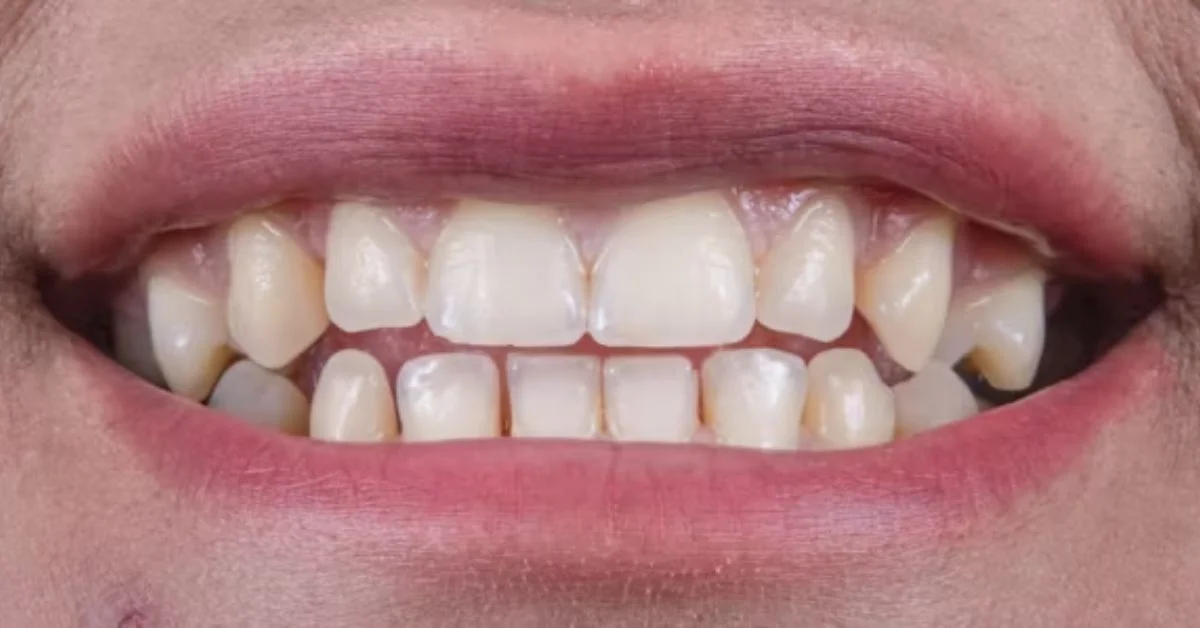Dental health plays a crucial role in maintaining confidence, functionality, and overall well-being. Among the many solutions available for restoring missing teeth, bridge teeth have emerged as one of the most reliable and time-tested restorative dental treatments. Unlike temporary fixes, bridge teeth provide a permanent replacement for missing teeth by literally “bridging” the gap left by one or more missing teeth.
This article takes you on a detailed exploration of bridge teeth, covering their meaning, history, types, procedures, advantages, challenges, aftercare, cost considerations, and the role they play in enhancing oral health.
What Are Bridge Teeth?
Bridge teeth, also known as dental bridges, are fixed prosthetic devices designed to replace one or more missing teeth by anchoring artificial teeth to adjacent natural teeth or implants. The artificial teeth, called pontics, are fused between crowns placed on the natural teeth or implants surrounding the gap.
The concept of a bridge is simple: just as a physical bridge connects two points across a gap, dental bridges span the empty space in your mouth caused by missing teeth.
Historical Evolution of Bridge Teeth
The idea of replacing missing teeth dates back thousands of years. Archaeological evidence suggests that ancient civilizations like the Etruscans used gold bands and animal teeth as primitive forms of dental bridges. Over time, dentistry evolved with better techniques and materials:
- 18th–19th Century: Gold, ivory, and porcelain teeth became common.
- 20th Century: Modern bridges used porcelain-fused-to-metal for durability and aesthetics.
- 21st Century: Today, all-ceramic and zirconia bridges provide a more natural appearance and longer lifespan.
Why Bridge Teeth Are Important
Losing a tooth is not just a cosmetic issue—it can have far-reaching effects. A missing tooth can cause:
- Difficulty in chewing
- Shifting of adjacent teeth into the empty space
- Bone loss in the jaw over time
- Speech difficulties
- Reduced self-confidence
Bridge teeth restore function, aesthetics, and oral health, making them a vital treatment option for millions worldwide.
Types of Bridge Teeth
Dental bridges are not “one-size-fits-all.” They come in various types depending on patient needs, location of the missing tooth, and dentist recommendations.
1. Traditional Dental Bridge
- The most common type.
- Involves creating crowns for the teeth on either side of the gap (abutment teeth) with a pontic in between.
- Suitable for patients with healthy adjacent teeth.
2. Cantilever Bridge
- Used when only one adjacent tooth is available for support.
- Less common today due to the risk of stress on a single supporting tooth.
3. Maryland Bridge (Resin-Bonded)
- Uses a metal or porcelain framework bonded to the back of adjacent teeth instead of crowns.
- Minimally invasive and commonly used for front teeth.
4. Implant-Supported Bridge
- Anchored by dental implants instead of natural teeth.
- Provides the most stability and prevents bone loss in the jaw.
Table: Comparison of Bridge Teeth Types
| Type | Support | Best For | Advantages | Disadvantages |
|---|---|---|---|---|
| Traditional Bridge | Adjacent teeth | Most cases | Strong, natural look | Requires removal of enamel from support teeth |
| Cantilever Bridge | One adjacent tooth | Limited gaps | Useful when only one tooth available | Can strain supporting tooth |
| Maryland Bridge | Metal/porcelain wings | Front teeth | Less invasive, affordable | Not as durable for back teeth |
| Implant-Supported Bridge | Dental implants | Multiple missing teeth | Long-lasting, prevents bone loss | Requires surgery, more costly |
The Dental Bridge Procedure
The process of getting bridge teeth usually involves several steps carried out over multiple visits to the dentist.
Step 1: Consultation and Examination
- Dentist evaluates the gap and adjacent teeth.
- X-rays or digital scans are taken.
- Treatment plan is discussed, including the type of bridge most suitable.
Step 2: Tooth Preparation
- Abutment teeth (if traditional bridge) are reshaped to accommodate crowns.
- Impressions of teeth are made for precise fitting.
Step 3: Temporary Bridge
- A temporary bridge is placed to protect exposed teeth and gums while the permanent bridge is crafted.
Step 4: Permanent Bridge Placement
- The permanent bridge is tested for fit, bite, and comfort.
- Adjustments are made before cementing it in place.
Step 5: Final Adjustments and Care Guidance
- Dentist ensures proper alignment and provides care instructions.
Benefits of Bridge Teeth
Bridge teeth provide numerous advantages beyond restoring smiles:
- Improved Aesthetics – Restores natural look and confidence.
- Better Chewing Function – Allows eating comfortably again.
- Speech Improvement – Prevents slurring or lisping caused by missing teeth.
- Prevention of Teeth Shifting – Stops adjacent teeth from moving into empty space.
- Durability – With proper care, bridges can last 10–15 years or longer.
Possible Risks and Limitations
Like any dental procedure, bridges also have certain challenges:
- Adjacent teeth may need significant reshaping.
- Bridges may become loose if supporting teeth weaken.
- Food particles may get trapped beneath the bridge, requiring extra hygiene care.
- Implant-supported bridges require surgery, which carries its own risks.
Caring for Bridge Teeth
Proper care is critical to ensure the longevity of bridge teeth.
Daily Care
- Brush teeth twice daily using fluoride toothpaste.
- Floss daily, especially using floss threaders to clean under the bridge.
- Use antibacterial mouthwash to reduce plaque buildup.
Professional Care
- Schedule dental checkups every 6 months.
- Professional cleaning helps remove hidden plaque.
Cost of Bridge Teeth
The cost of dental bridges varies depending on the type, materials, and location of treatment.
Table: Average Costs of Bridge Teeth
| Type of Bridge | Estimated Cost (USD) |
|---|---|
| Traditional Bridge | $1,500 – $5,000 |
| Cantilever Bridge | $1,500 – $4,000 |
| Maryland Bridge | $1,000 – $2,500 |
| Implant-Supported Bridge | $4,000 – $15,000+ |
Insurance often covers part of the cost, but implant-supported bridges may not always be included.
Bridge Teeth vs Alternatives
| Treatment | Description | Advantages | Disadvantages |
|---|---|---|---|
| Bridge Teeth | Fixed replacement using crowns/implants | Durable, natural-looking, functional | Requires support teeth or surgery |
| Dental Implants | Individual artificial roots placed in bone | Long-term solution, prevents bone loss | Higher cost, requires surgery |
| Dentures | Removable replacement teeth | Affordable, non-invasive | Less stable, may cause discomfort |
Myths and Misconceptions About Bridge Teeth
- “Bridges don’t look natural.” – Modern bridges are highly aesthetic and often indistinguishable from real teeth.
- “They’re only for old people.” – Anyone with missing teeth can benefit from bridges.
- “They are painful to get.” – With modern anesthesia, discomfort is minimal.
- “They don’t last long.” – With care, bridges can last over 15 years.
Future of Bridge Teeth
With advancements in dental materials, digital scanning, and minimally invasive procedures, the future of bridge teeth looks promising.
- 3D printing will allow quicker, more precise bridges.
- Zirconia and ceramic will replace metal for improved durability.
- Bio-integrated implants will merge bridges with regenerative techniques.
Conclusion
Bridge teeth stand as one of the most effective solutions for missing teeth, providing a balance of function, aesthetics, and durability. They not only restore smiles but also protect oral health, improve chewing, and prevent complications caused by missing teeth. Although they require proper care and investment, the benefits far outweigh the challenges. With continuous advancements in dental technology, bridge teeth are evolving into more natural, longer-lasting, and patient-friendly solutions.
FAQs
1. How long do bridge teeth last?
With good oral hygiene and regular dental checkups, bridge teeth can last 10–15 years, sometimes even longer.
2. Do bridge teeth feel like natural teeth?
Yes, once adjusted, bridge teeth feel and function like natural teeth, allowing comfortable chewing and speaking.
3. Are dental bridges better than implants?
Both have benefits: bridges are quicker and less invasive, while implants are more durable and prevent bone loss.
4. Can bridge teeth be whitened?
No, artificial bridge teeth cannot be whitened. Dentists recommend whitening natural teeth before bridge placement.
5. How do I clean under a bridge?
Use floss threaders, interdental brushes, and water flossers to clean under and around the bridge effectively.
For more information, click here.









